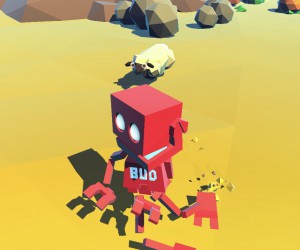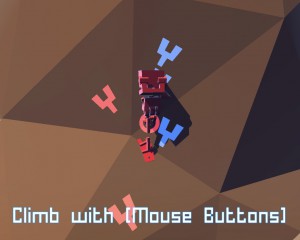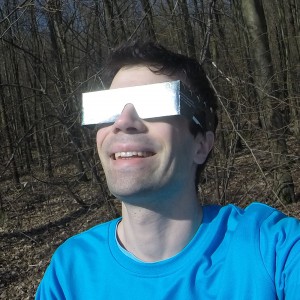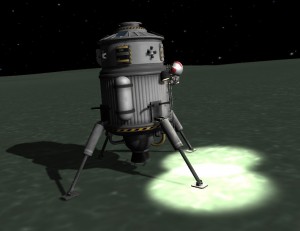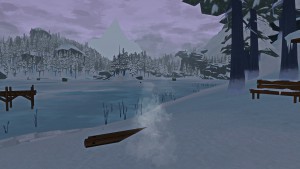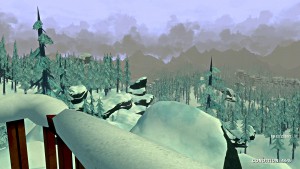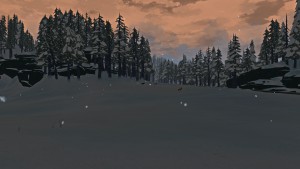Unbelievable! This is the 100th article of my weekly series about game based learning, game research, computer games and science in general. I can not believe that I am doing this now for almost two years without running out of content! I am really looking forward continuing this series–science and scientific results are just amazing topics.
Garrison – Quests
During my ongoing literature review I often discover interesting facts about things I’ve never thought about. Sometimes I can connect these facts with my own observations: The result is mostly a completely new idea why things are as they are. Maybe these ideas are new to you, too. Therefore I’ll share my new science based knowledge with you!
This week: This time, I think about the core game mechanics of a new feature added to World of Warcraft with the expansion pack Warlords of Draenor: the Garrison.
The last three articles analyzed all the game mechanics being used to realize the feature of the Garrison in WoW. However, the presentation of the Garrison is also linked with two core features of WoW: completing quests and defeating evil creatures. The quests are connecting the Garrison to the campaign of WoD and are helping to increase the immersive effect of being part of something big.
After upgrading the Garrison to level 3, the players gain access to the „Strategic Assault Choice“ (SAC). This feature is basically a quest that can be accepted and completed on a daily basis. Activating the SAC menu allows the players to choose between two different tasks, sending the players to different regions of WoD with the task to attack a certain enemy. This can be mostly done by just killing enough enemies until the progress bar reaches 100%. Apart from just killing evil creatures, the players can also work towards the completion of the quest by destroying or collecting specific items or freeing captured NPCs.
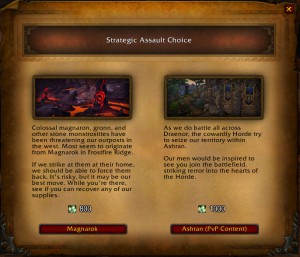
Strategic Assault Choice
The players are challenged to visualize the problem of the quest and need to decide what actions they need to take in order to complete the quest. This is mostly demanding the visualization, decision-making and problem-solving skills of the players. While fighting against the evil creatures, the players have to react to special attacks and threatening environmental conditions (e.g. fire on the ground). Moreover, the players have to analyze the area, spot potential targets and control the actions of their avatars via keyboard and mouse inputs. This is demanding the reaction time, the hand-eye-coordination, the decision-making and the spatial navigation abililties of the players.
Completing these SAC quests can also unlock a Garrison Invasion. This invasion is a special event that takes place inside the player’s Garrison. After having unlocked such an invasion, the players can talk to one of the NPCs standing around in the Garrison and start this special event. Throughout the progression of this invasion, the players get constantly attacked by evil creatures. The presentation of this invasion is also enhanced by the fact that the Garrison guards participate in this battle creating the impression that a huge attack is conducted against the own fortress.
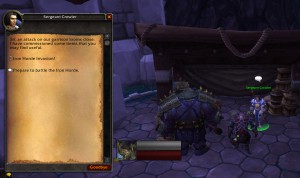
Prepare to battle
During the battle, the players are also able to score some points. The final score of the invasion determines the player’s reward: reaching more than 300 points rewards the players with a first reward, scoring more 600 points results in a better reward and scoring more than 1000 points rewards the players with the best possible reward. Scoring these points is mostly done by killing the attackers. Apart from regular enemies, the Garrison is also attacked by special creatures which are granting more points after being defeated. This challenges the players to keep always an eye on these special events and requires them to focus their attacks on these particular creatures to score well during the invasion. Moreover, the players receive additional points for keeping their Garrisons intact. This challenges the player to also keep an eye on potential enemies who can damage the buildings.
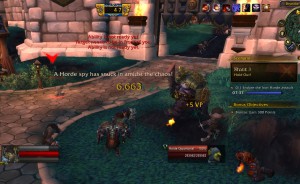
The Garrison Invasion is in progress.
The Garrison Invasion is demanding the same human skills as solving a quest. The players have to identify and locate enemies and pay attention to special attacks. The game mechanic of scoring points results in an increased demand for decision making and reaction time: the players have to react to the occurance of special enemies and have to defeat them in time before the invasion is finished or some damage is caused to a building of the Garrison.
The last quest related feature of the Garrison is the so-called „Garrison Campaign“. The Garrison Campaign unlocks over time a series of quests, providing some more background information about all the events of the WoD expansion pack and the presence of the players in the regions of WoD. The demands for solving these quests are exactly the same demands as mentioned in the SAC part. Solving a quest requires the players to visualize and solve a problem. This is then mostly done by defeating enemies which is demanding the identified human abilities.
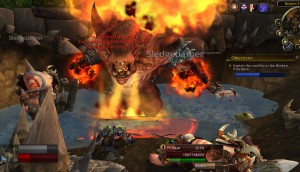
Working towards the completion of a quest.
Finally, the Garrison Invasion and all the Garrison related quests can also be completed in a group with other players. In case of forming a group, the game mechanics are also demanding the collaboration and team work skills of the players. Depending on the class of the avatar, the players can sustain more damage, cause more damage or heal other players. This stone-paper-scissors approach is challenging the collaboration skills of the players. Moreover, the player’s Garrison gets attacked from multiple sites and defending it together with other players offers the opportunity to work together and assign one player per front line resulting in a better defense of the Garrison. This is then also demanding a task distribution ability.
